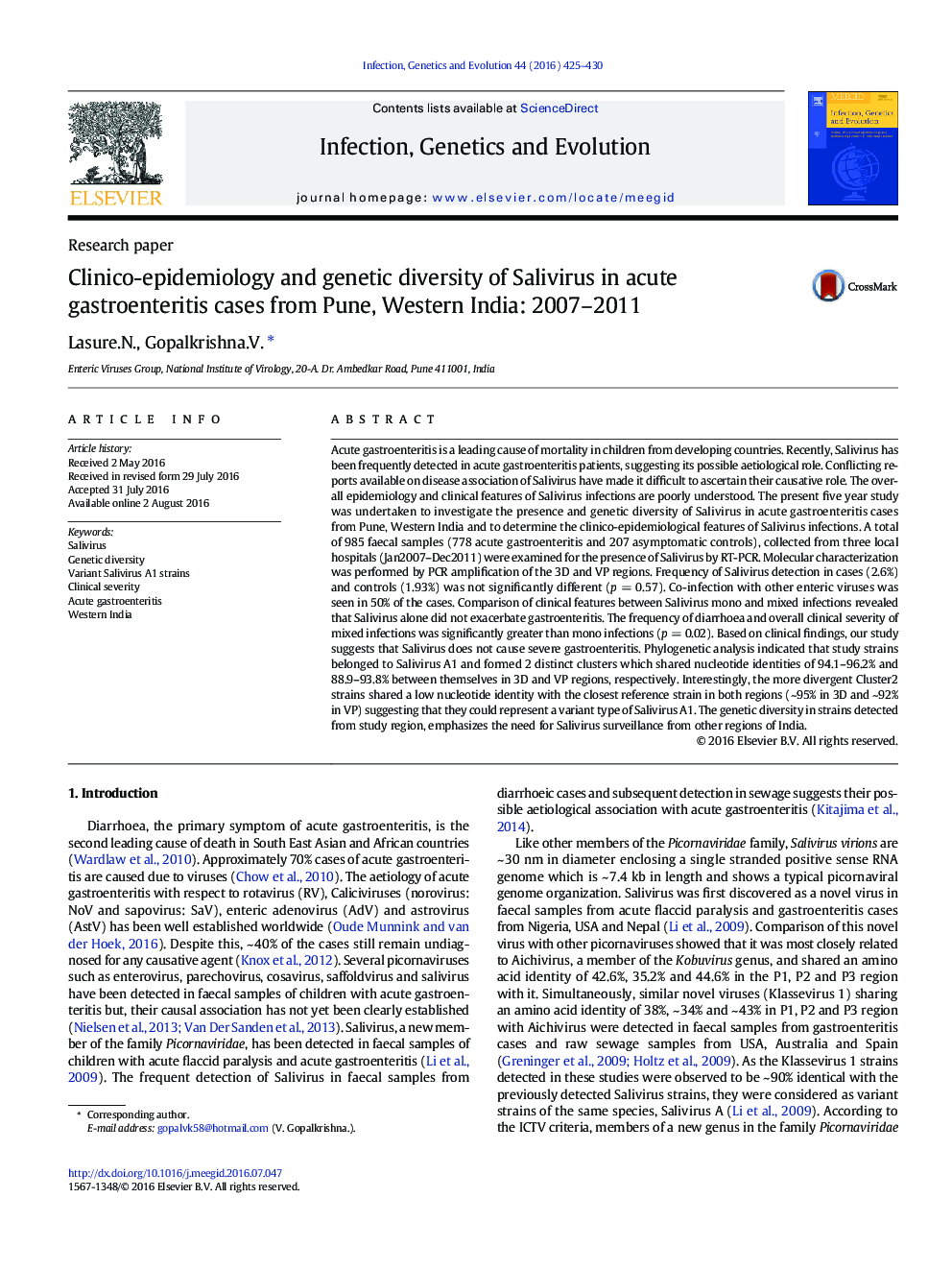| Article ID | Journal | Published Year | Pages | File Type |
|---|---|---|---|---|
| 5908203 | Infection, Genetics and Evolution | 2016 | 6 Pages |
Abstract
Acute gastroenteritis is a leading cause of mortality in children from developing countries. Recently, Salivirus has been frequently detected in acute gastroenteritis patients, suggesting its possible aetiological role. Conflicting reports available on disease association of Salivirus have made it difficult to ascertain their causative role. The overall epidemiology and clinical features of Salivirus infections are poorly understood. The present five year study was undertaken to investigate the presence and genetic diversity of Salivirus in acute gastroenteritis cases from Pune, Western India and to determine the clinico-epidemiological features of Salivirus infections. A total of 985 faecal samples (778 acute gastroenteritis and 207 asymptomatic controls), collected from three local hospitals (Jan2007-Dec2011) were examined for the presence of Salivirus by RT-PCR. Molecular characterization was performed by PCR amplification of the 3D and VP regions. Frequency of Salivirus detection in cases (2.6%) and controls (1.93%) was not significantly different (p = 0.57). Co-infection with other enteric viruses was seen in 50% of the cases. Comparison of clinical features between Salivirus mono and mixed infections revealed that Salivirus alone did not exacerbate gastroenteritis. The frequency of diarrhoea and overall clinical severity of mixed infections was significantly greater than mono infections (p = 0.02). Based on clinical findings, our study suggests that Salivirus does not cause severe gastroenteritis. Phylogenetic analysis indicated that study strains belonged to Salivirus A1 and formed 2 distinct clusters which shared nucleotide identities of 94.1-96.2% and 88.9-93.8% between themselves in 3D and VP regions, respectively. Interestingly, the more divergent Cluster2 strains shared a low nucleotide identity with the closest reference strain in both regions (~95% in 3D and ~92% in VP) suggesting that they could represent a variant type of Salivirus A1. The genetic diversity in strains detected from study region, emphasizes the need for Salivirus surveillance from other regions of India.
Related Topics
Life Sciences
Agricultural and Biological Sciences
Ecology, Evolution, Behavior and Systematics
Authors
Lasure. N., Gopalkrishna. V.,
